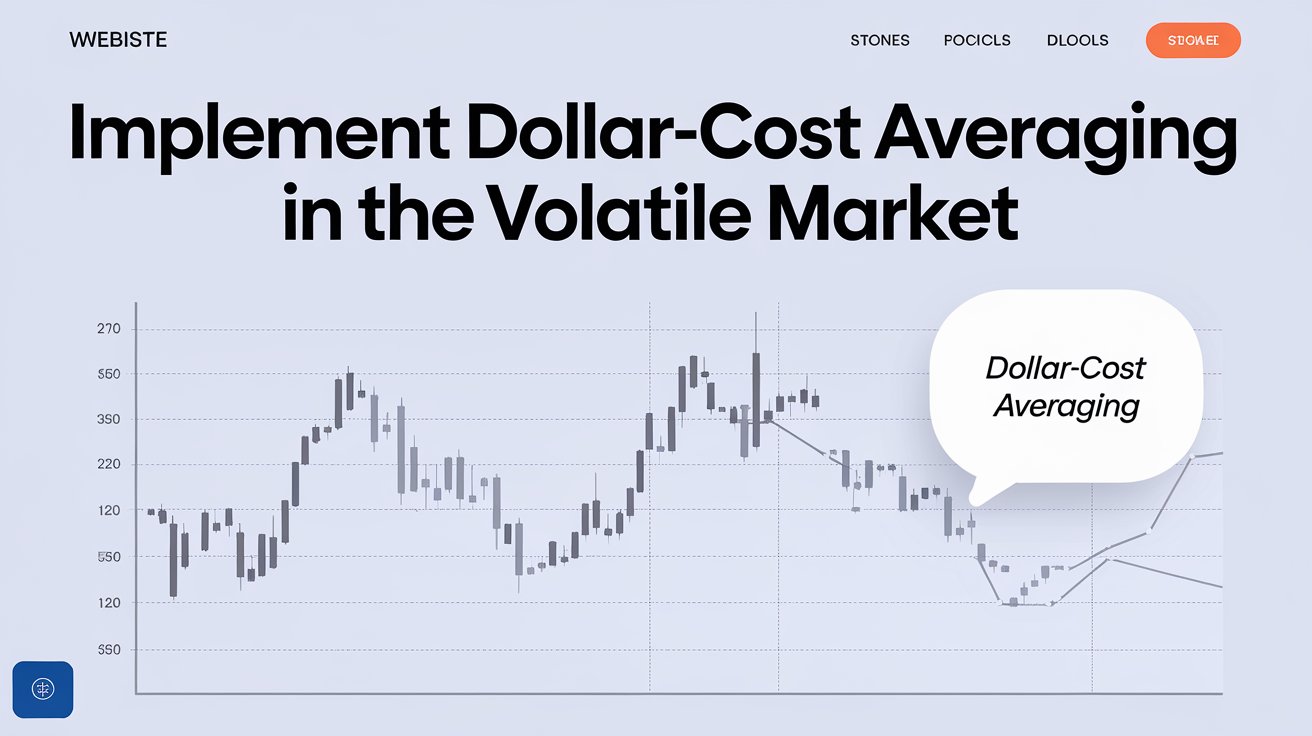In the ever-changing landscape of the 2024 financial markets, investors face unique challenges and opportunities. With economic uncertainties, geopolitical tensions, and technological disruptions influencing market trends, many are seeking reliable strategies to navigate these turbulent waters. One time-tested approach that has gained renewed attention is dollar-cost averaging (DCA). This article explores how to effectively implement DCA in the volatile 2024 market environment.
Understanding Dollar-Cost Averaging
What is Dollar-Cost Averaging?
Dollar-cost averaging is an investment strategy where an investor divides up the total amount to be invested across periodic purchases of a target asset. The goal is to reduce the impact of volatility on the overall purchase. By investing a fixed amount regularly, regardless of the asset’s price, investors buy more shares when prices are low and fewer shares when prices are high.
Benefits of DCA in Volatile Markets
- Mitigates timing risk: DCA helps avoid the pitfall of trying to time the market, which is notoriously difficult, especially in volatile conditions.
- Emotional discipline: By automating investments, DCA removes emotional decision-making from the equation.
- Potential cost reduction: Over time, DCA can lower the average cost per share of investments.
- Consistent investing habit: DCA encourages regular investing, which can lead to better long-term outcomes.
Implementing DCA in the 2024 Market
Step 1: Assess Your Financial Situation
Before implementing DCA, evaluate your financial goals, risk tolerance, and investment timeline. Consider factors such as:
- Your current income and expenses
- Emergency fund status
- Short-term and long-term financial objectives
- Overall portfolio allocation
Step 2: Choose Your Investment Vehicles
In the 2024 market, consider a mix of:
- Broad market index funds: These provide diversification across various sectors.
- Sector-specific ETFs: Focus on sectors showing resilience or growth potential in the current economic climate.
- Bonds and fixed-income securities: These can offer stability in a volatile equity market.
- Alternative assets: Consider REITs, commodities, or cryptocurrency allocations for further diversification.
Step 3: Determine Your Investment Frequency and Amount
Decide how often you want to invest and how much. Common DCA frequencies include:
| Frequency | Pros | Cons |
|---|---|---|
| Weekly | More opportunities to capitalize on dips | Higher transaction costs (if applicable) |
| Bi-weekly | Aligns with many pay schedules | Moderate balance of opportunity and cost |
| Monthly | Lower transaction costs | Fewer opportunities to capitalize on short-term fluctuations |
| Quarterly | Minimal effort and costs | May miss out on shorter-term market movements |
Choose an amount that’s sustainable for your budget and aligns with your long-term goals.
Step 4: Set Up Automated Investments
Many brokerages and investment platforms offer automated investing features. Set up recurring transfers from your bank account to your investment account, and configure automatic purchases of your chosen assets.
Step 5: Monitor and Rebalance
While DCA reduces the need for constant monitoring, it’s still important to:
- Review your investments quarterly or semi-annually
- Rebalance your portfolio if allocations drift significantly from your target
- Adjust your strategy if your financial situation or goals change
Adapting DCA to 2024’s Market Conditions
With interest rates potentially remaining elevated in 2024:
- Consider allocating a portion of your DCA to high-yield savings accounts or CDs
- Explore bond laddering strategies to capitalize on changing rates
Embracing Technology Sector Volatility
The tech sector may continue to experience significant volatility:
- Use DCA to gradually build positions in quality tech companies or ETFs
- Consider broader index funds to capture tech growth while mitigating single-stock risk
Addressing Geopolitical Uncertainties
In light of ongoing global tensions:
- Include geographical diversification in your DCA strategy
- Consider defensive sectors as part of your regular investments
Capitalizing on Emerging Trends
As new technologies and sectors emerge:
- Allocate a small portion of your DCA to thematic ETFs (e.g., AI, clean energy)
- Regularly review and adjust these allocations based on performance and market trends
Common Pitfalls to Avoid
- Abandoning the strategy during market downturns: Stick to your plan, even when markets are falling.
- Overcomplicating the process: Keep your DCA strategy simple and easy to maintain.
- Neglecting diversification: Don’t focus solely on a single asset or sector.
- Forgetting to adjust for life changes: Review and modify your DCA plan as your financial situation evolves.
Conclusion
Implementing dollar-cost averaging in the volatile 2024 market can be an effective way to build long-term wealth while managing risk. By systematically investing across various market conditions, investors can potentially reduce the impact of short-term volatility on their portfolios. The key to success with DCA lies in careful planning, consistent execution, and periodic review.
Remember that while DCA can be a powerful tool, it’s not a guarantee against losses, especially in short-term market fluctuations. Always consider your individual financial situation, consult with a financial advisor if needed, and be prepared to adapt your strategy as market conditions and personal circumstances change.
By embracing the principles of dollar-cost averaging and tailoring them to the unique challenges of the 2024 market, investors can position themselves for long-term success, regardless of short-term market turbulence.

